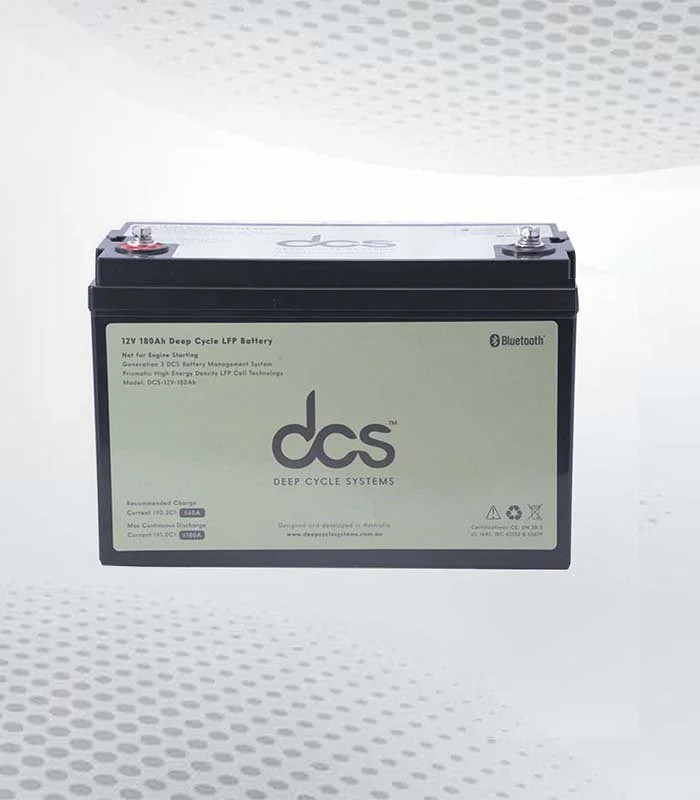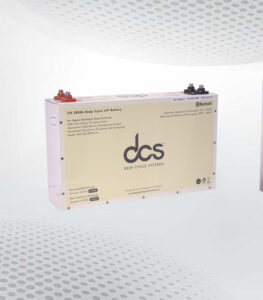Do you want to replace your 180Ah battery more often than you’d like? Maximizing its lifespan can save you both time and money. You can keep your battery running efficiently for years with the right strategies. Whether you’re powering a solar system, an RV, or other applications, knowing how to care for your Battery is essential. In this guide, we’ll explore practical tips that will help you extend the life of your battery while maintaining optimal performance. Let’s dive in and discover how simple habits can lead to significant gains!
Optimal Charging Practices: How to Charge Your Battery for Longevity
Charging your Battery correctly is essential for maximizing its lifespan. Ideally, aim to charge it slowly and steadily rather than opting for rapid charging methods. A slower charge allows the battery cells to absorb energy more effectively, reducing stress on the internal components.
Always use a charger that matches your battery’s specifications. This ensures compatibility and prevents potential damage from voltage fluctuations or incorrect amperage. Pay attention to the recommended charging cycles—deep cycling can shorten your battery’s life if done frequently.
Monitor the state of charge regularly. Keeping your battery between 20% and 80% capacity can significantly enhance longevity. Avoiding extremes in both directions helps maintain healthy chemical reactions within the cells, promoting better performance over time.
Avoiding Overcharging: Preventing Damage and Extending Battery Life
Overcharging is one of the leading causes of battery damage. When a Battery is charged beyond capacity, it can lead to overheating, swelling, and even leakage. These issues compromise performance and significantly reduce the overall lifespan.
Always use a compatible charger designed for your specific battery type to avoid overcharging. Advanced chargers often come with built-in features that automatically shut off when the battery reaches full charge. This not only protects your investment but also ensures optimal performance.
It’s wise to monitor charging cycles closely. Tracking how long your battery takes to charge helps identify any irregularities in its behavior. Stop immediately and investigate further to prevent irreversible damage if you notice excessive heat or other unusual signs during charging.
Maintaining Proper Temperature: Keeping Your 180 Ah Battery in the Right Range
Temperature plays a crucial role in the performance and lifespan of your 180 Ah Battery. Extreme heat or cold can hinder its efficiency, leading to quicker degradation. For optimal results, keep your battery within a temperature range of 20°C to 25°C (68°F to 77°F).
If temperatures rise beyond this range, it can cause internal damage and reduce capacity. Insulating your battery from sunlight or considering cooling solutions can help manage excessive heat. Conversely, if the environment is too cold, charging may become inefficient as chemical reactions slow.
Regularly check the surrounding conditions where you store or use your battery. It is wise to invest in insulation or heaters for colder climates. Maintaining proper temperature control ensures that your investment lasts longer and performs better under various conditions.
Regular Maintenance: Routine Checks and Care for Your Battery
Regular maintenance is essential for maximizing the lifespan of your Battery. Schedule routine checks to inspect for any signs of wear, corrosion, or leaks. These small issues can escalate quickly if addressed.
Cleaning the terminals should also be part of your maintenance routine. A buildup of dirt and corrosion can hinder performance and lead to poor connectivity. Use baking soda and water to clean the terminals gently, ensuring they are dry before reconnecting.
Additionally, check the electrolyte levels if you have a flooded lead-acid battery. Add distilled water when necessary to maintain them at the recommended levels. This simple step helps prevent damage from sulfation and significantly extends overall battery life.
Balancing Battery Cells: Ensuring Uniform Charge Distribution
Balancing battery cells is crucial for maximizing the lifespan of your Battery. When cells are charged and discharged unevenly, it can lead to reduced performance and premature failure. A well-balanced system ensures that each cell works in harmony, promoting efficiency.
Consider using a Battery Management System (BMS) to achieve uniform charge distribution. This technology monitors individual cell voltages and adjusts charging accordingly. Keeping all cells at similar voltage levels enhances overall battery health.
Regular maintenance checks can also help identify imbalances early on. During routine assessments, look for discrepancies in voltage readings across cells. Addressing these issues promptly will prevent potential complications down the line and keep your Battery running smoothly.
Proper Storage: How to Store Your Battery When Not in Use
Properly storing your Battery when not in use can significantly impact its lifespan. Choose a cool, dry location away from direct sunlight and extreme temperatures. Ideally, the storage area should be between 50°F and 80°F (10°C to 27°C). This environment helps prevent the degradation of the battery’s internal components.
Before storing, ensure your battery is clean and corrosion-free on the terminals. Disconnect it from any devices or systems to avoid unnecessary drainage. Perform a full charge before storage; this will help maintain optimal performance when you put it back into service.
During long-term storage, it’s wise to check the voltage periodically every few months. This practice allows you to monitor your battery’s health and recharge it if necessary. Keeping an eye on your battery means you’ll extend its life while ensuring it’s ready for action whenever you need it again.
Avoiding Deep Discharges: Managing Battery Usage for Longevity
Deep discharges can severely impact your Battery’s lifespan. Whenever possible, aim to keep the charge level above 50%. Frequent draining below this threshold puts unnecessary stress on the battery, leading to quicker degradation.
To manage usage effectively, monitor how you draw power from the battery. Tasks that require high energy consumption should be planned around peak capacity times. This approach helps distribute energy use more evenly and protects your battery’s health.
Consider investing in a monitoring system that tracks voltage levels and alerts you when it’s time to recharge. Being proactive about charging and using less power-hungry devices when feasible will ensure your Battery remains robust for years.
Using a Battery Management System (BMS): Enhancing Battery Safety and Efficiency
A Battery Management System (BMS) plays a crucial role in maintaining the health of your Battery. It monitors key parameters like voltage, current, and temperature to prevent overcharging or excessive discharging. A BMS ensures that each cell operates within its optimal range by keeping these factors in check.
In addition to safety features, a BMS enhances efficiency by balancing the charge across all cells. This uniform distribution prevents imbalances that can lead to reduced performance over time. When every cell works effectively together, you’ll notice improved longevity and reliability from your battery system.
Moreover, many modern BMS units come equipped with communication capabilities. They can provide real-time data about battery status via apps or dashboards. This feature allows users to make informed decisions regarding charging and usage patterns, ultimately leading to better overall management of your Battery’s lifespan.
Cleaning Battery Terminals: Preventing Corrosion and Ensuring Good Contact
Battery terminals are crucial for maintaining a reliable connection. Over time, they can accumulate dirt and corrosion, which leads to poor performance of your Battery. Regular cleaning is essential to keep those connections strong.
To clean the terminals, start by disconnecting the battery. Use a mixture of baking soda and water to neutralize any acid buildup. A small brush or an old toothbrush scrub away any grime gently. Rinse with clean water and dry thoroughly afterwards.
After cleaning, apply a thin layer of petroleum jelly on the terminals. This will help prevent future corrosion by creating a protective barrier against moisture and dirt. Ensuring good contact at the terminals allows your battery to function optimally, extending its lifespan significantly.
Monitoring Battery Health: Tools and Techniques for Regular Assessment
Monitoring the health of your Battery is crucial for ensuring optimal performance. Regular assessments help you identify issues before they escalate into major problems. A multimeter is a basic yet essential tool for checking voltage levels, giving you immediate insights into battery status.
Consider using a Battery Management System (BMS) for more advanced monitoring. This system tracks real-time parameters such as voltage, current, and temperature. It can alert you to any irregularities, allowing for timely interventions that could extend your battery’s lifespan.
Another effective technique involves periodic load testing. You can gauge its overall capacity and condition by applying a controlled load to the battery and measuring how well it holds up under stress. This proactive approach ensures you know your battery’s performance level.
Temperature Management: Protecting Your Battery from Extreme Heat and Cold
Extreme temperatures can significantly affect the performance and lifespan of your Battery. High heat can lead to accelerated chemical reactions within the battery, causing it to degrade faster. This means reduced capacity over time and an increased risk of failure.
Conversely, cold temperatures also pose a threat. When it’s too cold, a battery’s ability to deliver power diminishes. In severe cases, freezing conditions may even damage internal components. Therefore, it’s crucial to monitor your battery’s environment closely.
To protect your investment, consider insulating your battery during extreme weather conditions. Using thermal blankets or enclosures can help maintain a stable temperature range. You are additionally, storing the battery in a climate-controlled area when not in use is highly beneficial for long-term health.
Avoiding Physical Damage: Handling Your Battery 180 Ah with Care
Handling your Battery 180 Ah with care is crucial for its longevity. These batteries are often heavy and can be tricky to maneuver. Always use proper lifting techniques and consider using a dolly or cart when transporting the battery. This reduces the risk of dropping it, which can lead to serious internal damage.
Ensure that you’re storing your battery safely away from high-traffic areas. Avoid placing it near sharp objects or surfaces that could cause scratches or punctures. A dedicated storage area protects the battery and those around it.
When connecting or disconnecting terminals, do so gently. Use appropriate tools designed for this purpose to avoid stripping screws or damaging connectors. Taking these precautions helps maintain optimal performance and extends the life of your Battery significantly.
Conclusion
Maximizing the lifespan of your 180Ah battery is essential for reliable performance. By following best practices, you can significantly extend its life and efficiency. Consider these tips as part of your routine. Integrating simple habits into your charging and maintenance process will pay off in the long run. Every detail counts in preserving battery health, from managing temperature to ensuring regular checks. Adopting a proactive approach fosters not only longevity but also safety in usage.
FAQ’s
What is the average lifespan of a 180Ah battery?
The lifespan of a 180Ah battery can vary widely based on usage and maintenance. Typically, these batteries can last anywhere from 5 to 10 years with proper care. Factors like charging habits, discharge depth, and environmental conditions significantly determine longevity.
How often should I check my battery’s health?
Regular checks are essential for maintaining your battery’s performance. It’s advisable to monitor the health of your Battery at least every three months. Look for signs such as swelling or corrosion on terminals, which may indicate underlying issues.
Can I use any charger for my Battery?
Not all chargers are compatible with every type of battery. Ensure you use a charger specifically designed for your 180Ah model to prevent overcharging or undercharging. This helps maintain optimal performance and extends the life of your battery significantly.
| Related Business Listings |
| Directory Submissions |
| Regional Directory |




